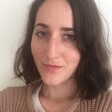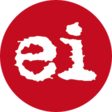Activism and BDS Beat 2 October 2012
On 2 October in Tel Aviv, the Israeli organization Zochrot will open its exhibit Towards a Common Archive, a showing that features more than thirty testimonies by Zionist perpetrators of the 1948 Nakba.
Filmmaker Eyal Sivan and historian Ilan Pappe are curating the exhibit in conjunction with Zochrot, the only Israeli organization dedicated to remembering the expulsions and massacres in Palestine in 1948.
According to Zochrot’s website, the testimonies have been collected from interviews filmed specifically for this exhibit, in addition to “clips from documentaries by Israeli filmmakers with fighters’ testimonies, Nakba representations from feature films which constitute testimonies in their own right, [and] testimonies by second- and third-generation descendants of fighters.”
Also screening at the exhibit will be a preview of the online “Common Archive for 1948 Palestine” project, an additional undertaking led by Sivan.
Sivan’s latter project was announced last year and has the increasingly urgent ambition to collect testimonies from the aging generation of the Haganah, Palmach, Irgun and Stern Gang — those Zionist militias that perpetrated the crimes that are today known collectively as the Nakba.
“I killed someone”
The following testimony was given by Hava Keller, who enlisted in the Haganah in 1948 when she was a young teen. In her testimony, Keller describes how she oversaw the expulsion of Acre and how she thought the fleeing villagers would return.
Keller also describes when she killed someone, “One of my worst memories was during the attack on Yehiam. And I killed someone. It was war and I acted exactly according to instructions. I waited until they arrived near the fence, then I shot and had tremendous luck, as he was killed on the spot. I think now, how would I have felt had he lay below my post for a few hours and screamed” (9:30).
Zochrot’s website features an excerpt from one of the filmed testimonies that will appear in the exhibit. A fighter in the Palmach-Yiftach brigade describes the Dahmash Mosque Massacre in Lydd, one of a series of expulsions and exterminations that together constitute the Nakba:
“They found a little hole, 120 people snuffed it. One hundred and twenty people were in this mosque. This I knew. They talked about it. They fled to the mosque because they thought that was the safest place - that there they wouldn’t kill them. Because they knew Israelis would not destroy a mosque.” (sic)
In writing about the project, Sivan emphasizes that while the last decade has seen the significant emergence of Palestinian testimonies of the Nakba, those of the perpetrators themselves are missing. And with a Truth and Justice Committee unlikely to be established in the near or immediate future, recording these testimonies now is imperative to any effort to save truth and memory.
The Common Archive aims “to create an audio-visual online archive of Jewish executor’s testimonies of the 1948 crimes with cross references to testimonies of Palestinian refugees and other historical visual data (maps, photos, etc).”
Eyal Sivan’s project draws on the writing and words of Primo Levi, who in his meticulous documentation and recollection of his time in Nazi concentration camps resisted what he called the “war against memory” waged by the Third Reich. (The Drowned and the Saved, 1986)
Likewise, the State of Israel has aspired to erase the memory of the Nakba for its victims, what Ilan Pappe called “memoricide” in The Ethnic Cleansing of Palestine. Despite the Jewish National Fund’s feverish planting of trees over the remains of emptied villages and —more recently — the Knesset (Israel’s parliament) and Israeli high court’s desperate attack on any commemoration of the state’s founding crime, the memory persists.
Sivan credits Levi with making a distinction between the witness and the survivor, a distinction that Sivan applies to remembering the Palestinian Nakba: “The primary witness of any war crime is the perpetrator himself or herself. Perpetrator’s testimonies reveal the actions they committed, and the reasons they provided — or still provide — as a vindication of their criminal behavior,” he writes on the project’s description.
Sivan, an Israeli filmmaker who resettled in Paris in 1985, has made several documentaries about Palestine. His latest film, Jaffa, the Orange’s Clockwork (2009) examines the appropriation of Palestine’s fabled, luscious citrus fruits in Zionist discourse.
The exhibit will run until 31 December 2012 in Tel Aviv. More information on Zochrot’s tours, testimonies and events can be read here.






Comments
Israel's war crimes
Permalink derrick gaskin replied on
The expulsion of Palestinians from their own homeland at gunpoint and in many instances the ethnic cleansing of whole villages, elderly, babies, children women and unarmed men (massacres in other words) was a war crime, one which Israel actively pursues to this day, and one day will have to be paid for. Nazi war criminals were hunted down for decades, the same will happen to Jews who committed these horrific murders.
Such documentation is essential for a real debate
Permalink Artemis replied on
Like the recent "Breaking the Silence" exhibition in Berlin, where some of the dreadful facts of the occupation were clearly and very courageously displayed by Israeli ex-soldiers who gave guided tours of the exhibtion, such work by Sivan and Pappe can only be welcomed.
There is nothing like the testimonies of the perpertrators to clear up the raging denials and justifications. It should be noted, however, that if Palestinians had created the same exhibition, it would not have been permitted (antisemitism!) or taken as seriously as this "Breaking the Silence".
I hope it will be put online
Permalink Fiona replied on
I hope it will be put online for those who cannot or will not travel to Israel.
The Nakba video project
Permalink Benavram replied on
On behalf of of all world citizens who cherish the heritage of prophetic, ethical Judaism, thank you for presenting the Nakba video. Zionism's monstrous crimes during its horrific, and too often psychopathic, assaults against unarmed elderly men, women and children during the rape of Palestine in1948 have been documented by Jewish authors such as Ralph Shoenman, Norman Finkelstein, Ilan Pappe, Gershom Gorenberg,Miko Peled,Henry Mankow,Shlomo Sand, etc. There is no shortage of Jewish citizens who painfully know that Zionism is not a synonym for prophetic Judaism. It is the opposite.